Honeysuckle Vine - Learn How to Care for Woodbine Plant
Honeysuckle is one of the most popular garden plants of recent years. It looks beautiful on small and large properties, although it's quite a demanding plant. There are many honeysuckle varieties on various continents. Japanese honeysuckle is a particularly popular species. Check if it's a plant for you. Learn about the needs of honeysuckle and discover the secrets of its care.
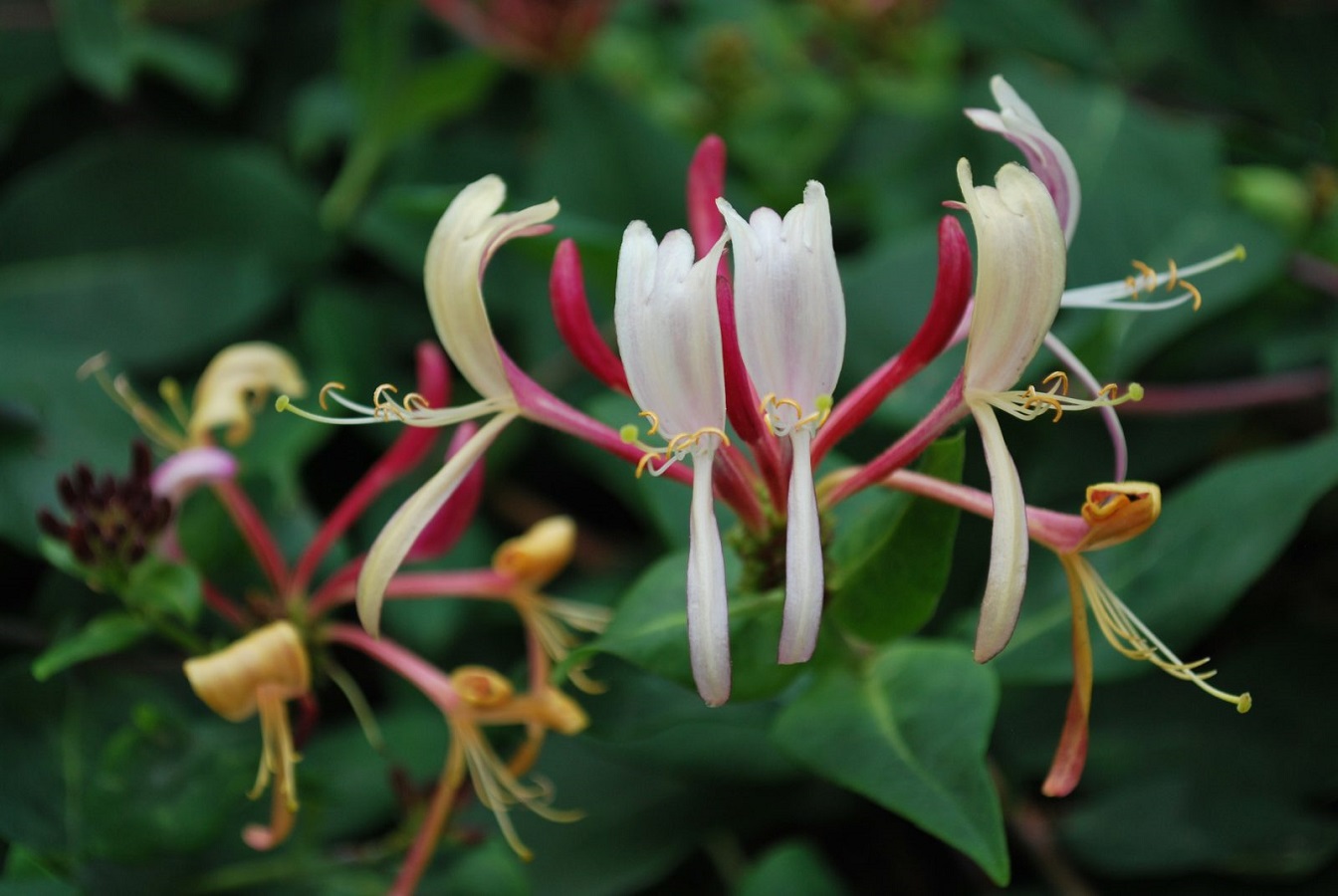
Honeysuckle – what kind of plant is it?
Honeysuckle (Lonicera) is a creeping plant of a unique appearance. It grows naturally in North America, Eastern Europe and Asia. Honeysuckle leaves resemble ivy, but what differentiates the plant is flowers – very characteristic, quite large and developing a peculiar scent.
Honeysuckle is typically planted in gardens next to pergolas, which make a perfect support for it. You can also plant it close to a balcony and let the branches grow along the railing.
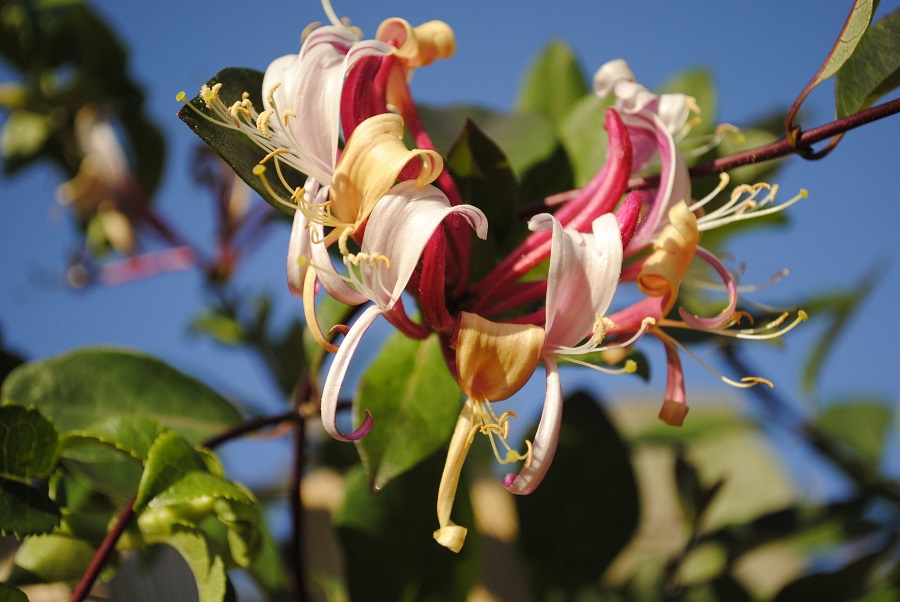
Honeysuckle – the most commonly cultivated varieties
Honeysuckle is a group of plants with many varieties appearing in different regions. As estimated, there are over 30 different honeysuckle species. Interestingly enough, each of them has its various cultivars. The number of all of them currently is about 900, although one cannot be sure it includes all the existing plants of this type.
This extensive group contains the most popular varieties, frequently cultivated in gardens. The most common honeysuckle plants include:
- Japanese honeysuckle (Lonicera japonica),
- Brown’s honeysuckle (Lonicera brownii),
- Italian woodbine (Lonicera caprifolium),
- European honeysuckle (Lonicera periclymenum).
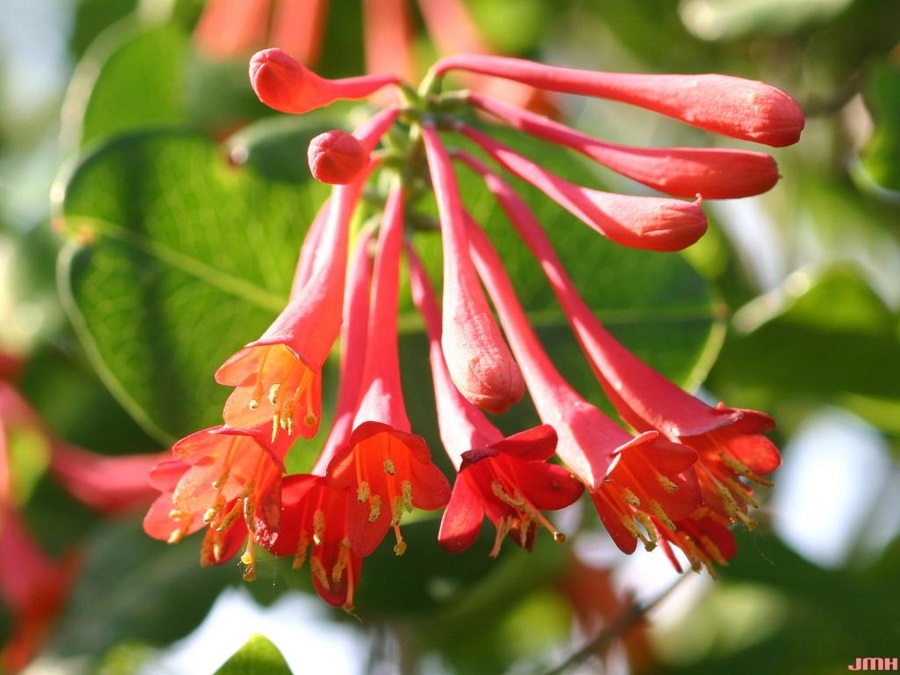
Why is it good to have a honeysuckle in the garden?
Honeysuckle is a very useful plant. Not only it decorates the garden, but, if trained to climb on a pergola, a gazebo or a balcony, it forms a pleasant shade in which one can rest during summer.
What’s more, Japanese honeysuckle, but also any other variety attracts beneficial insects. Bees collect nectar from the flowers and use it to produce honey. It’s a perfect plant for those who have beehives in their garden.
What is the best location for a honeysuckle?
Honeysuckle plants, regardless of the species or variety, prefer very sunny locations, in which they can grow faster and bloom intensely. But it’s also good if nearby trees or buildings cast some shade on the plant at some point during the day. This way, the plant is less prone to diseases.
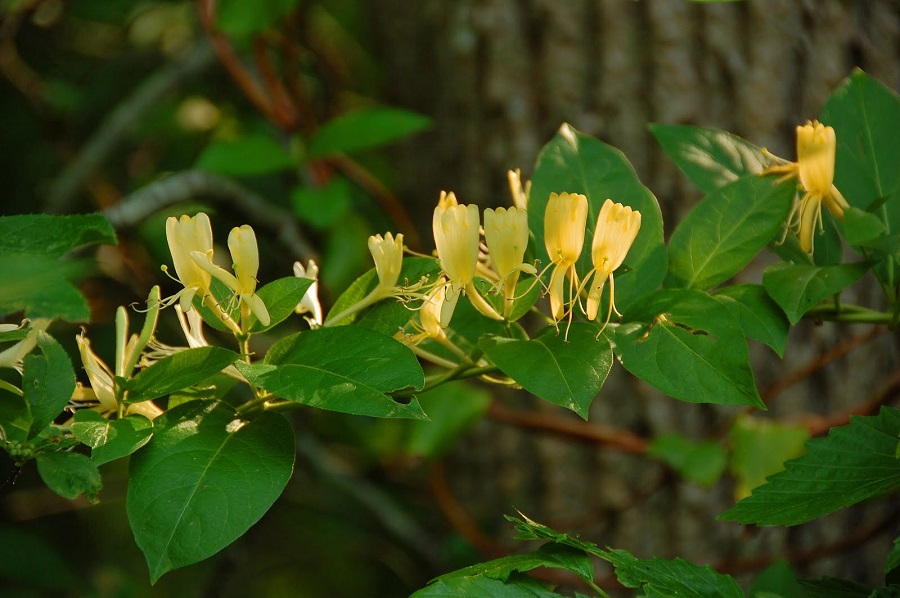
The best soil for a honeysuckle vine
As for the soil, honeysuckle might pose certain difficulties. It grows well in rich soils full of minerals soils and of moderate moisture levels. It doesn’t tolerate poor ground or even momentary droughts.
If the quality of soil in your garden is questionable, consider fertilizing it prior to planting a honeysuckle plant in it. To do this, use organic compost and peat in large quantities. Such treatment should be enough to ensure proper growth of the plant.
Regular watering is another important aspect. It’s better to do it frequently, and in small doses. Honeysuckle tolerates neither droughts nor excessive watering.
Honeysuckle – pruning and other care treatments
Honeysuckle is a plant that needs regular pruning – but this applies only to young specimens. It’s important, as such treatment encourages the plant to quicker growth and developing more branches.
Some gardeners decide to prune older plants as well. But this should be done no more than once every two years.
Regular fertilizing is another important care element. It results from the fact that honeysuckle is a demanding plant. If it lacks any nutrients in soil, its growth and blooming might slow down.
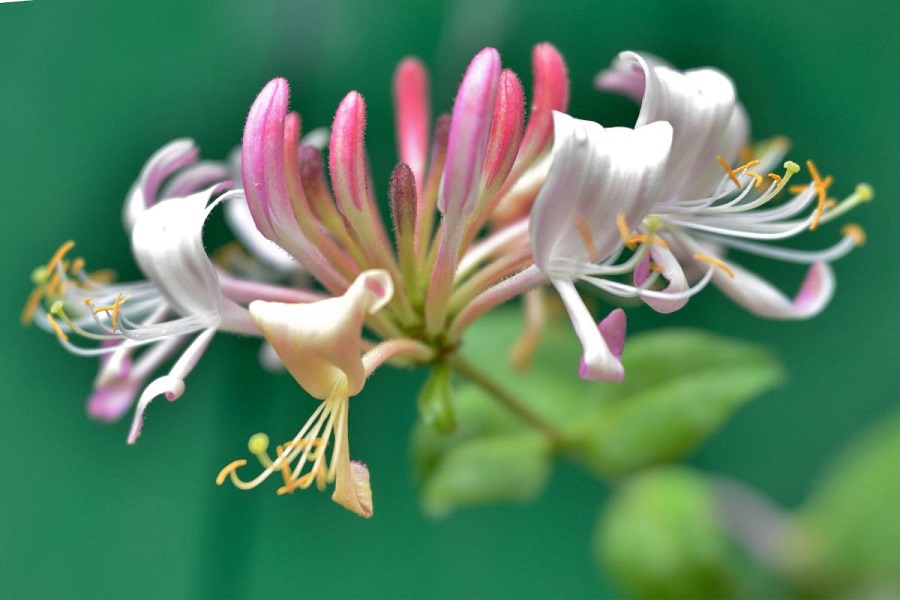
How to plant a honeysuckle in the garden?
You can plant honeysuckle either in large containers or directly in the ground. If you choose the first option, make sure the pot is large enough, to avoid having to transplant the vine after a short time.
If you decide to plant honeysuckle in the ground, remember to keep it at an appropriate distance from other garden plants. 1.5 meters provides enough space for the branches to grow freely.
The plant requires mulching – interestingly enough, in summer as well. Are you wondering why? This way, the roots are protected from intense sunlight.
What are the most common honeysuckle pests?
Aphids are the biggest threat to honeysuckle plants. They might appear in spite of good care. For this reason, consider using bug sprays as a preventative measure. You can begin the treatment in April. This way, there’s a better chance your garden plants will be protected.
Unfortunately, honeysuckle is very prone to various pests. It means it can catch pests such as:
- spider mites,
- mealybugs.
If you spot one of them, chemical products are the best treatment – you can purchase them in gardening stores. Make sure to control the plant regularly and act immediately in case you notice anything.
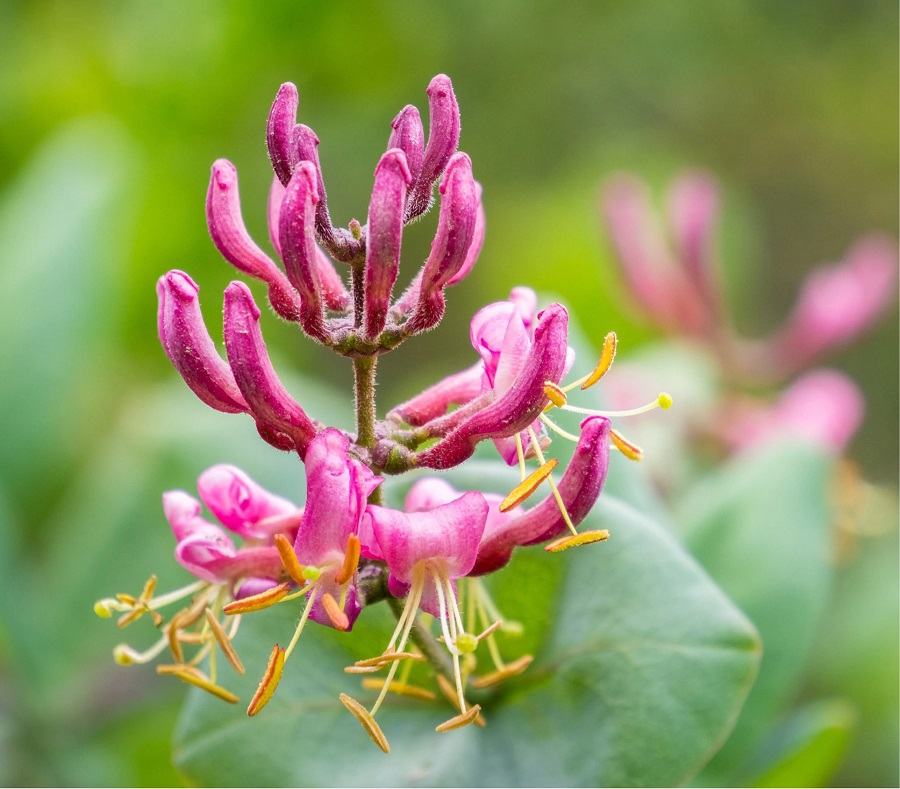
📍 When to plant honeysuckle in the garden?
Experienced gardeners suggest planting honeysuckle in autumn. This way, one can expect the best results. Those who missed that window, can plant woodbine in spring as well – but in this case, one needs to additionally fertilize the ground.
📍 When can you transplant honeysuckles?
Just as when planting honeysuckle, the best time for transplanting is fall. It's very important, as this is when the plant is dormant.
📍 How to propagate honeysuckle?
Honeysuckle can be propagated by cutting its branches. Just dip the cuttings in a rooting hormone and put them in a pot with soil. This process requires patience, as the plant will be ready for planting in the garden in several years.
📍 When to prune honeysuckle?
Pruning is essential for young honeysuckle plants. Early spring is the best time for it – between March and April. Older plants don't need trimming at all.
Featured articles




